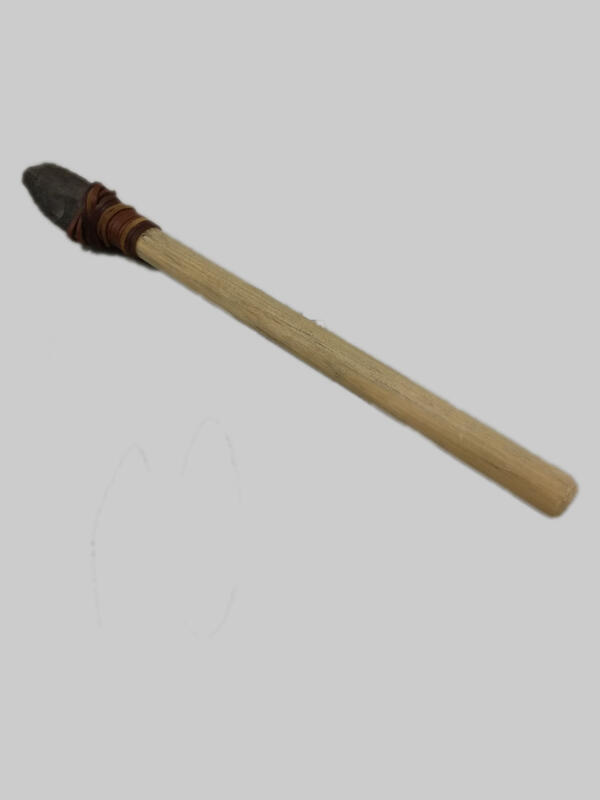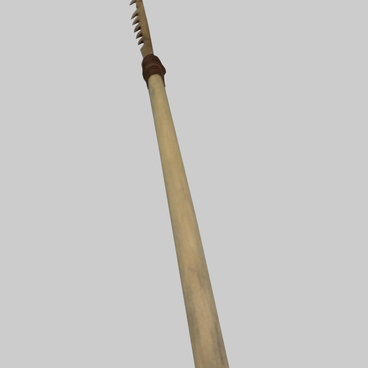Since ancient times, the main materials at hand for making tools have been stone, wood, and bone. Currently, about 4,000 archaeological sites have been discovered on the territory of Bashkiria. Out of these, there are about 400 Stone Age sites, with hundreds of thousands of finds. The Stone Age is a very ancient historical period,
during which the bulk of tools and weapons were fashioned from stone. The Stone Age begins about 2.5 million years ago, when the first Homo sapiens appeared. This is the longest historical era, and it lasted for about two million years.
The earliest monuments in the South Urals date back to 500,000-100,000 years B.C. The most famous monument from this time is the Mysovaya site in the Bashkirian Trans-Urals area. The monument was researched by Gerald Matyushin and Otto Bader.
On the territory of Bashkortostan, the most ancient monument from the Paleolithic era is the Kyzyl-Yar site, located in the Khaybullinskiy district. Archaeological finds in these places are made of dark-colored and black flint and jasper, and are sharpened on one side. Generally speaking, these are chiseled tools that have a handle. Their functional edges were treated by rough chipping action directed from the edge toward the center. Large pebbles were only treated using a few strokes, so that is what the production technique in the Paleolithic era was called: the ‘pebble technique’.
Stone tips were inserted into wooden shafts to make a spear. In ancient times, people attached spear tips to a wooden or bone haft using leather straps, or dense, flexible grass. Scrapers — oval pieces of stone sharpened on one side — were used to tan hides. During the Stone Age, the ancestors of modern mankind settled throughout the Urals, up to the Arctic Circle.
The exposition of the National Museum of the Republic of Bashkortostan showcases an ancient stone leaf-shaped spear with a modern wooden haft. This tip is made from black jasper, and is fastened to the haft by modern leather straps created in keeping with the types of fasteners used in those years. The spear was found at the Mysovaya site in 1971 during archaeological excavations led by Otto Bader.
during which the bulk of tools and weapons were fashioned from stone. The Stone Age begins about 2.5 million years ago, when the first Homo sapiens appeared. This is the longest historical era, and it lasted for about two million years.
The earliest monuments in the South Urals date back to 500,000-100,000 years B.C. The most famous monument from this time is the Mysovaya site in the Bashkirian Trans-Urals area. The monument was researched by Gerald Matyushin and Otto Bader.
On the territory of Bashkortostan, the most ancient monument from the Paleolithic era is the Kyzyl-Yar site, located in the Khaybullinskiy district. Archaeological finds in these places are made of dark-colored and black flint and jasper, and are sharpened on one side. Generally speaking, these are chiseled tools that have a handle. Their functional edges were treated by rough chipping action directed from the edge toward the center. Large pebbles were only treated using a few strokes, so that is what the production technique in the Paleolithic era was called: the ‘pebble technique’.
Stone tips were inserted into wooden shafts to make a spear. In ancient times, people attached spear tips to a wooden or bone haft using leather straps, or dense, flexible grass. Scrapers — oval pieces of stone sharpened on one side — were used to tan hides. During the Stone Age, the ancestors of modern mankind settled throughout the Urals, up to the Arctic Circle.
The exposition of the National Museum of the Republic of Bashkortostan showcases an ancient stone leaf-shaped spear with a modern wooden haft. This tip is made from black jasper, and is fastened to the haft by modern leather straps created in keeping with the types of fasteners used in those years. The spear was found at the Mysovaya site in 1971 during archaeological excavations led by Otto Bader.



